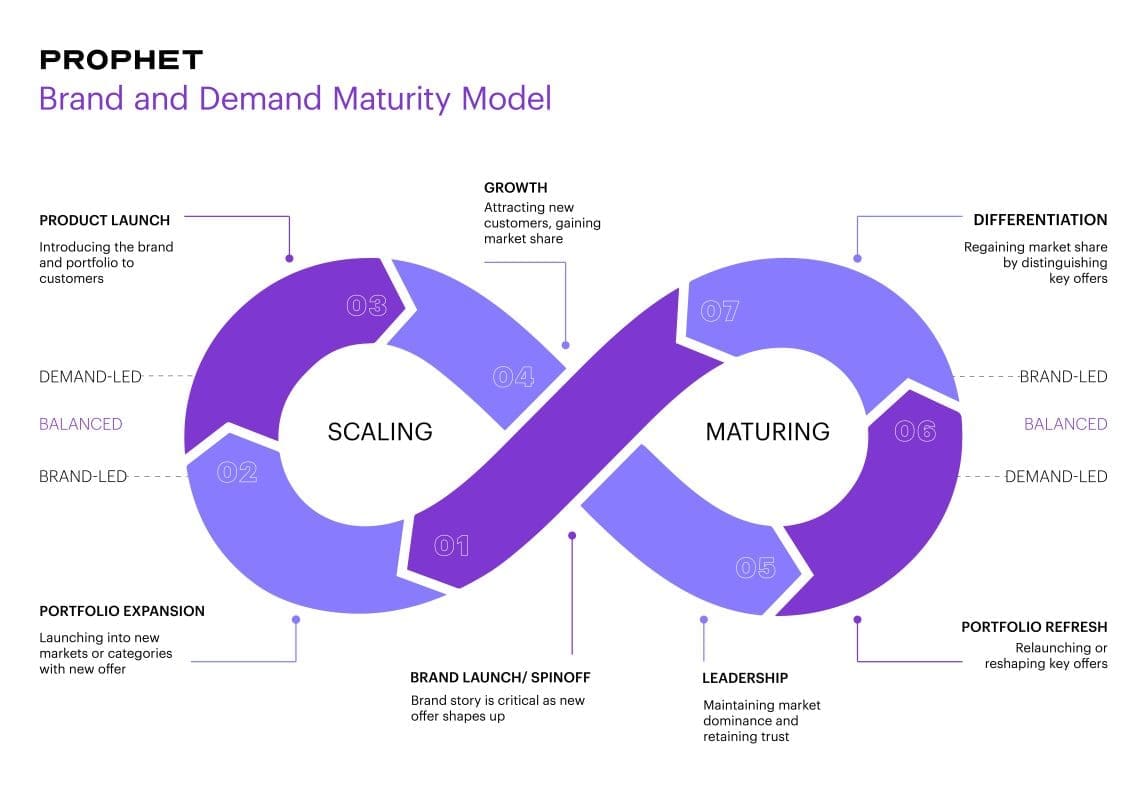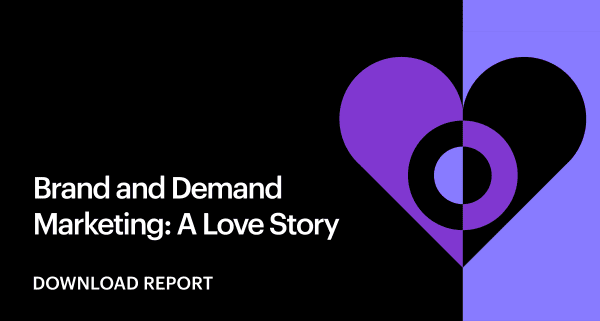BLOG
How Brand-Demand Love Wins Across the Marketing Lifecycle
The second post of a series about integrating brand and demand marketing capabilities to win in a complex and dynamic landscape, based on our conversations with CMOs across industries.
As we highlighted in the first post in our Brand-Demand Love series, we think it’s time for a more integrated and complementary relationship between brand and demand-gen marketing. Why? Because the current separation isn’t aligned to the dynamic purchase behaviors of consumers across an increasingly complex landscape. As Karla Davis, VP of Marketing at Ulta Beauty, told us:
“What is brand, and what is demand? That’s a little gray now.”
Karla Davis, VP of Marketing at Ulta Beauty
When accomplished senior marketers question the validity and usefulness of the traditional brand-demand paradigm – and many do – then surely, it’s time for a new model. After all, the effective coordination of brand and demand-gen activation strategies represents an integrated and agile marketing capability – the gold standard amongst marketing pros.
Feeling the Brand-Demand Love Across the Marketing Lifecycle
Brand and demand-gen activation cannot be viewed as separate or competing functions, but rather as interdependent and mutually reinforcing capabilities that comprise the core of the overall customer experience.
Each set of tactics has a significant role in attracting buyers and strengthening relationships at every step of the customer journey and across the entire lifecycle. But, taking the perspective of marketers, it’s easy to see why the brand-demand balance is fluid. When considering marketing activation investments, companies might adjust their orientation as:
- Brand-led
- Demand-led
- Balanced
As business objectives evolve and companies navigate distinct phases of maturity, the optimal marketing approach will vary. For instance, a brand needing to differentiate from a competitive pack may need to be brand-led to generate awareness and consideration, while a business undergoing a portfolio launch, expansion or refresh may have more balanced brand-demand priorities.
For businesses focused on customer acquisition or market share gains, demand-led models will serve their immediate priorities in tandem with brand campaigns. Many direct-to-consumer brands, unique in their offerings, initially focused on acquisition only to shift towards brand marketing as their category became crowded. Mature organizations that find themselves at a point of market saturation and businesses without fully defined offers will both rely on brand-led marketing efforts to develop, sustain and enhance customer relationships.

Learning from Airbnb
Airbnb’s decision to cease all demand generation activities coming out of the pandemic suggests just how much the brand-demand pendulum can swing. When the pandemic shut down all travel, the company eliminated its marketing activation spend, which totaled $1.62 billion in 2019. As lockdown restrictions eased, Airbnb saw most of its traffic return to pre-pandemic levels, prior to re-investing in marketing activation campaigns.
“I don’t anticipate doing a lot of incentives because we have a huge amount of demand for the service already,” Airbnb CEO Brian Chesky told CNBC. “We are never going to spend the amount of money on [demand] marketing as a percentage of revenue as we did before the pandemic [because] our brand’s incredibly strong.”
Not every brand is Airbnb, of course, and it’s far more common for brand marketing spending to get in the crosshairs of budget cutters. The brand-demand mix is fluid for large and small marketing organizations. Other companies will find they need a different balance at different moments within their growth curves and maturity cycles.
External factors also play a role in defining the right balance at the right time. Social issues, including diversity and inclusion and climate change, are leading some companies to deploy brand spending to align with important causes. Ashley Laporte, director at the communications firm RALLY explained her company’s approach as “Less about cause marketing, and more about helping companies take part in driving systemic change.” Taking positions that consumers support may lead to some increase in demand, but it will be hard to attribute sales directly to, say, thought leadership regarding a company’s commitment to net-zero admissions.
Another CMO in the manufacturing industry said she wanted “credit from business leaders, the board and institutional investors” for effectively positioning the brand relative to these issues, especially since it made the business more attractive to rising generations of workers. An industry analyst told us, “Brands are being tortured with the cultural and societal unrest that’s out there,” and not just because investments related to these tricky issues are extraordinarily hard to measure.
What’s Love Got to Do With It?
Mastering the brand-demand mix means being flexible and committing to making necessary adjustments over time, like those that take place across the course of loving relationships. One partner’s needs may take precedence during a certain phase of life, but afterward, things rebalance as conditions change. It’s never exactly 50-50 (or 60-40 as in the famous Binet & Field model for budget allocation, which we’ll explore in more detail in a future post). Such a rigid formula may cause opportunities to be missed and doesn’t match the real world, where marketers must continuously adjust based on changing market conditions and business needs.

The new research report, “Brand and Demand: A Love Story” is here! Learn how today’s Brand and Demand Generation leaders are bringing their functions together to drive greater impact.
Download today!
FINAL THOUGHTS
We suggest speaking the “language of love” to business leaders and other stakeholders who struggle to see beyond the numbers in evaluating the merits of brand investments. The key is to connect business objectives to the power and resonance of brand. Marketers that can bring empathy and emotional intelligence to these conversations will be more likely to find supportive partners – and isn’t that what we’re all looking for?
In our next post, we look more closely at proven principles for shaping effective go-to-market strategies – the “vows of the brand-demand marriage.”
Get in touch today if you’d like to learn how to bring brand and demand together to win across the full marketing lifecycle.













